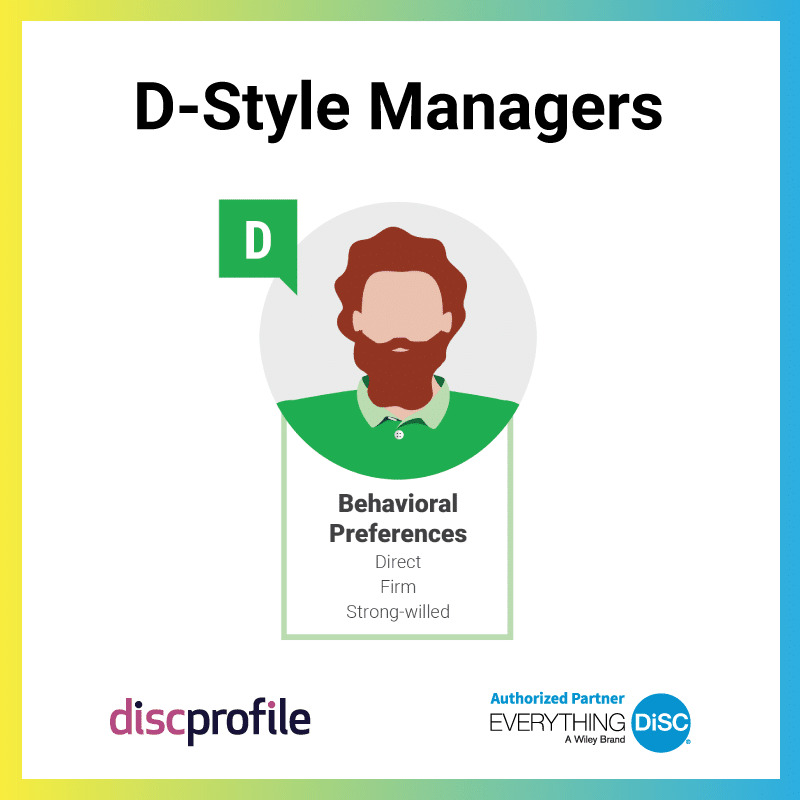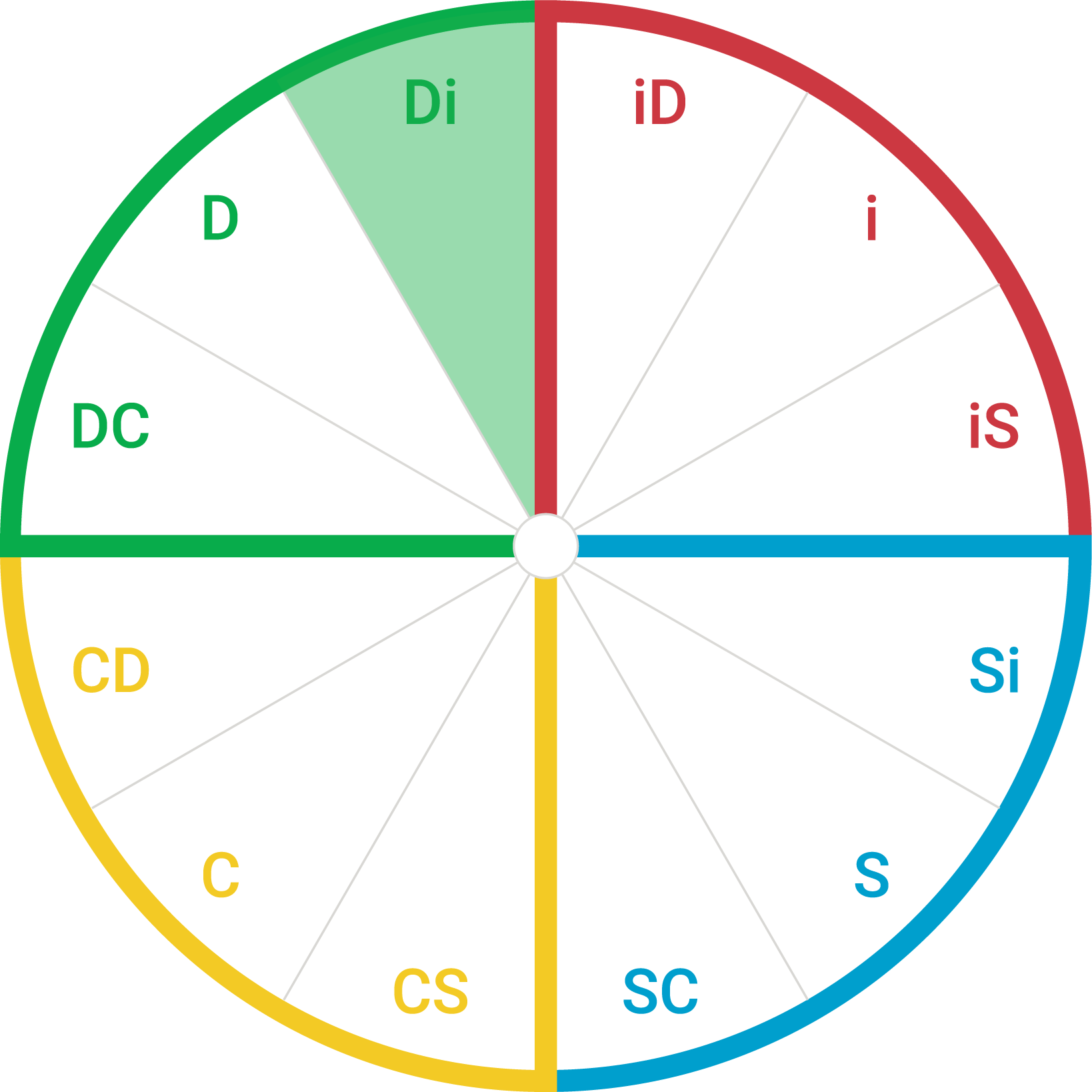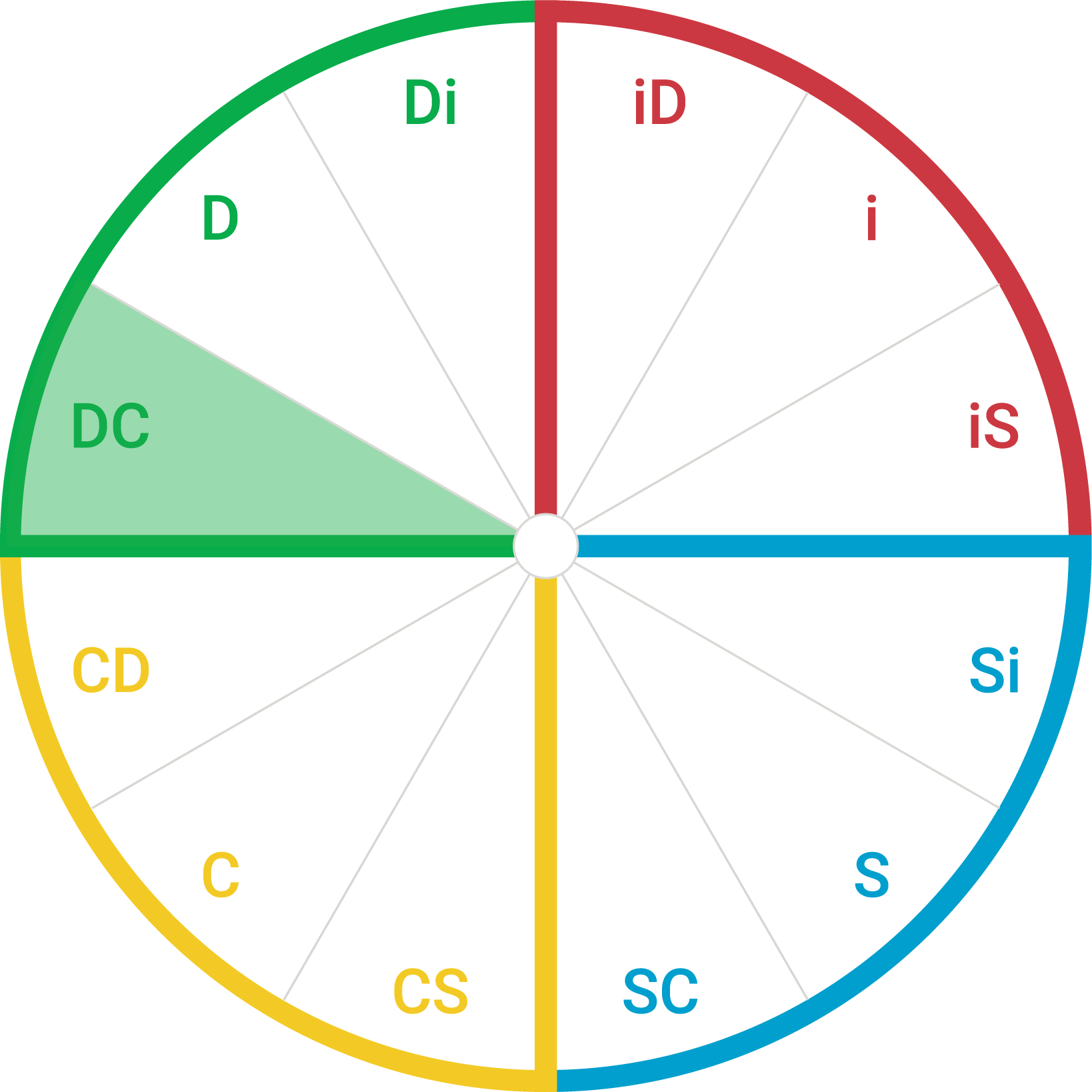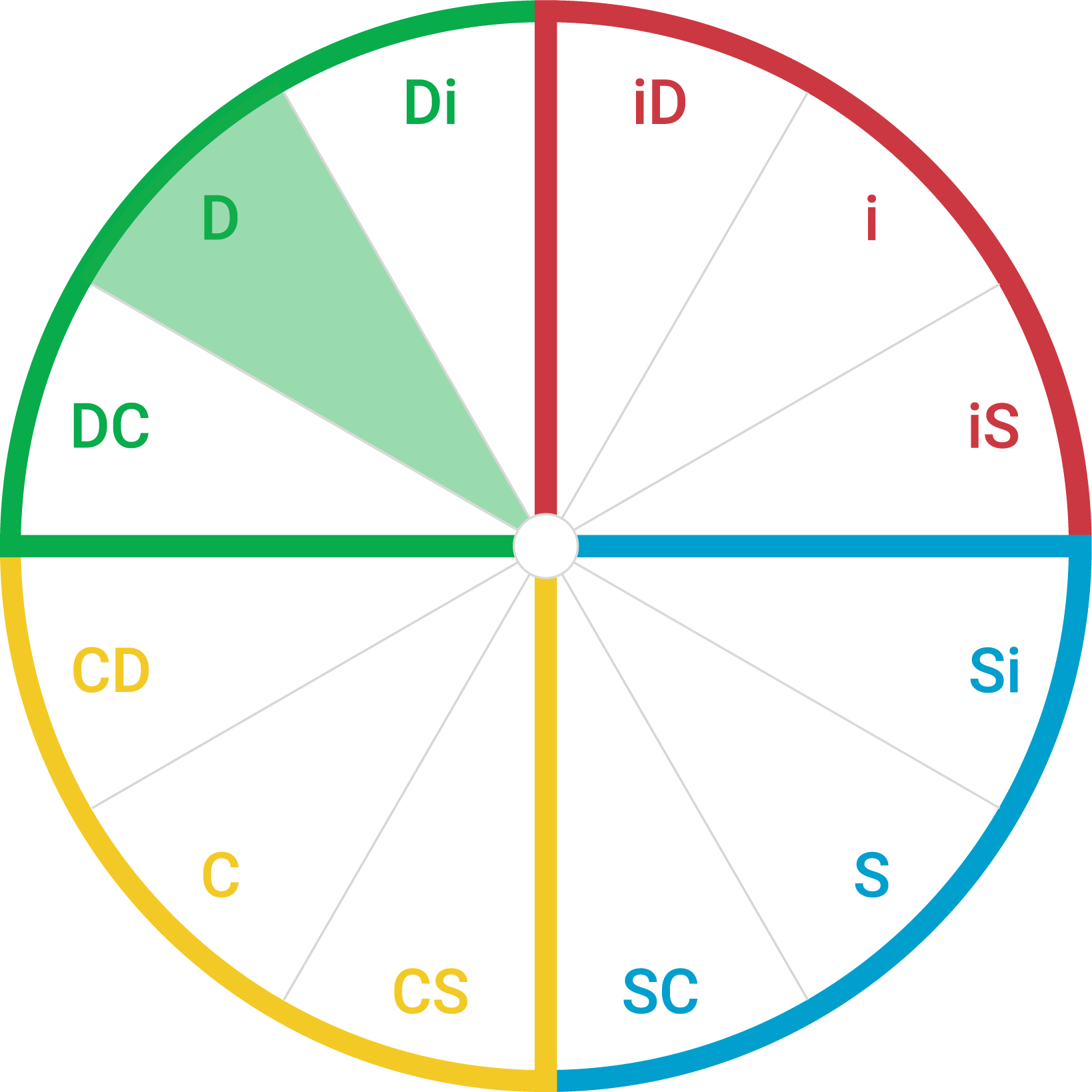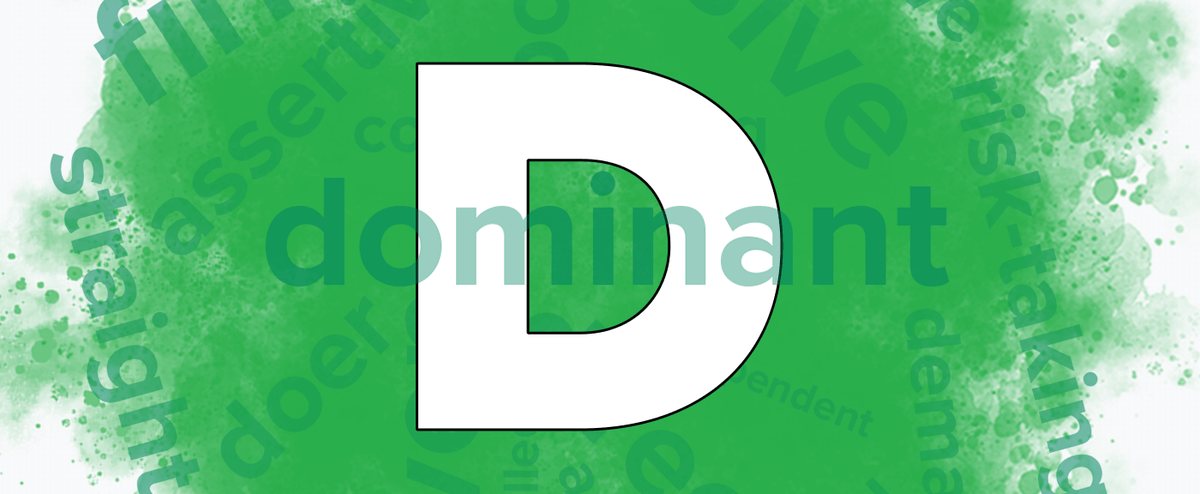
D style
D is for dominance
People with the DiSC D style personality are usually direct, driven, and results-oriented. You’ll notice the D style acting assertively, making quick decisions, and speaking candidly.
What does the D in DiSC mean?
The D in the Everything DiSC® model stands for Dominance. People with D styles may be described as strong-willed and competitive. They are action-oriented folks who strive for success and enjoy a good challenge. People with the DiSC D style are more likely than others to push vigorously for their opinions and desired results.
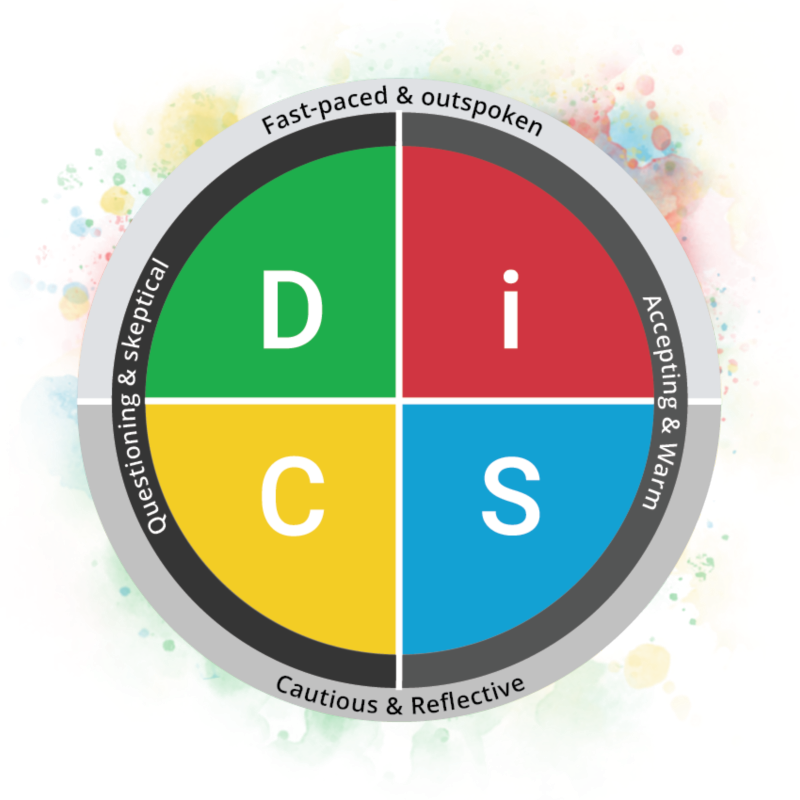
How do you get typed as a D?
At its core, the DiSC model is two-dimensional, measuring:
- pace, on a scale from fast-paced and outspoken to cautious and reflective
- agreeableness, on a scale from questioning and skeptical to accepting and warm
D styles are those personalities that are both fast-paced and outspoken, and also questioning and skeptical.
An Everything DiSC assessment goes far beyond these two scales. When you take the assessment, you'll discover your placement within the DiSC circle model, which fine-tunes the four main DiSC styles into 12 more specific styles.
.png)
Dot placement
Human personality is wonderfully varied. Though people with D styles share high-level behavioral preferences, these traits show up in many ways. The dot placement on your Everything DiSC profile tells this story.
For example, you might be strongly inclined to the DC style, with your dot appearing on the far edge and between the D and C lines. Or you might be slightly inclined toward the D style with your dot appearing closer to the middle and centered in the D quadrant.
Learn more: DiSC® dot and priorities explained


